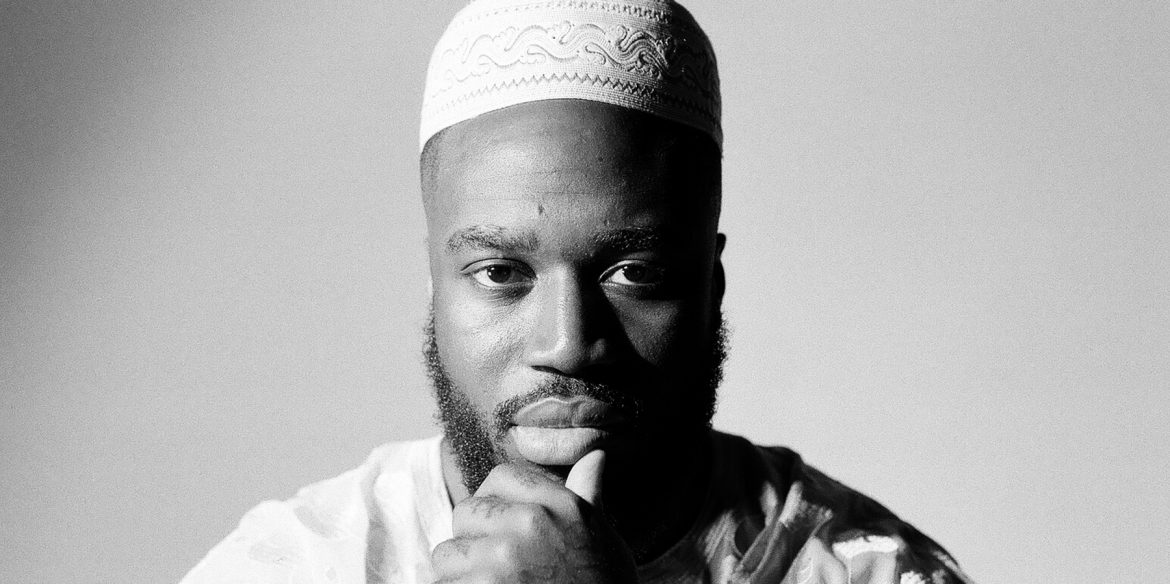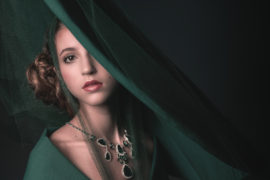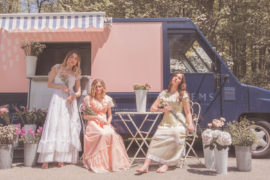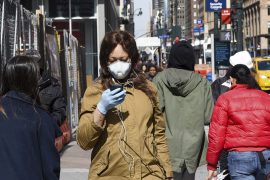It’s been said that photography is a generous medium. Technically speaking, anyone can pick up a camera and learn to be a photographer. However things get more complicated when you attempt to develop an artistic style within photography, and this is where the good photographers are separated from the great ones.
Francis Nwosu is a conceptual photographer, cinematographer and artist born in Nigeria, going against the grain of what the world expects him to create. His work is centered around storytelling a vulnerability, blending emotions with delicate flowers in one photo and guns in the next. More concerned with expressing his faith through his work than meeting your expectations, Francis shows us what it takes to separate yourself from the masses.
Without further ado, please welcome Francis Nwosu to Art Identified.
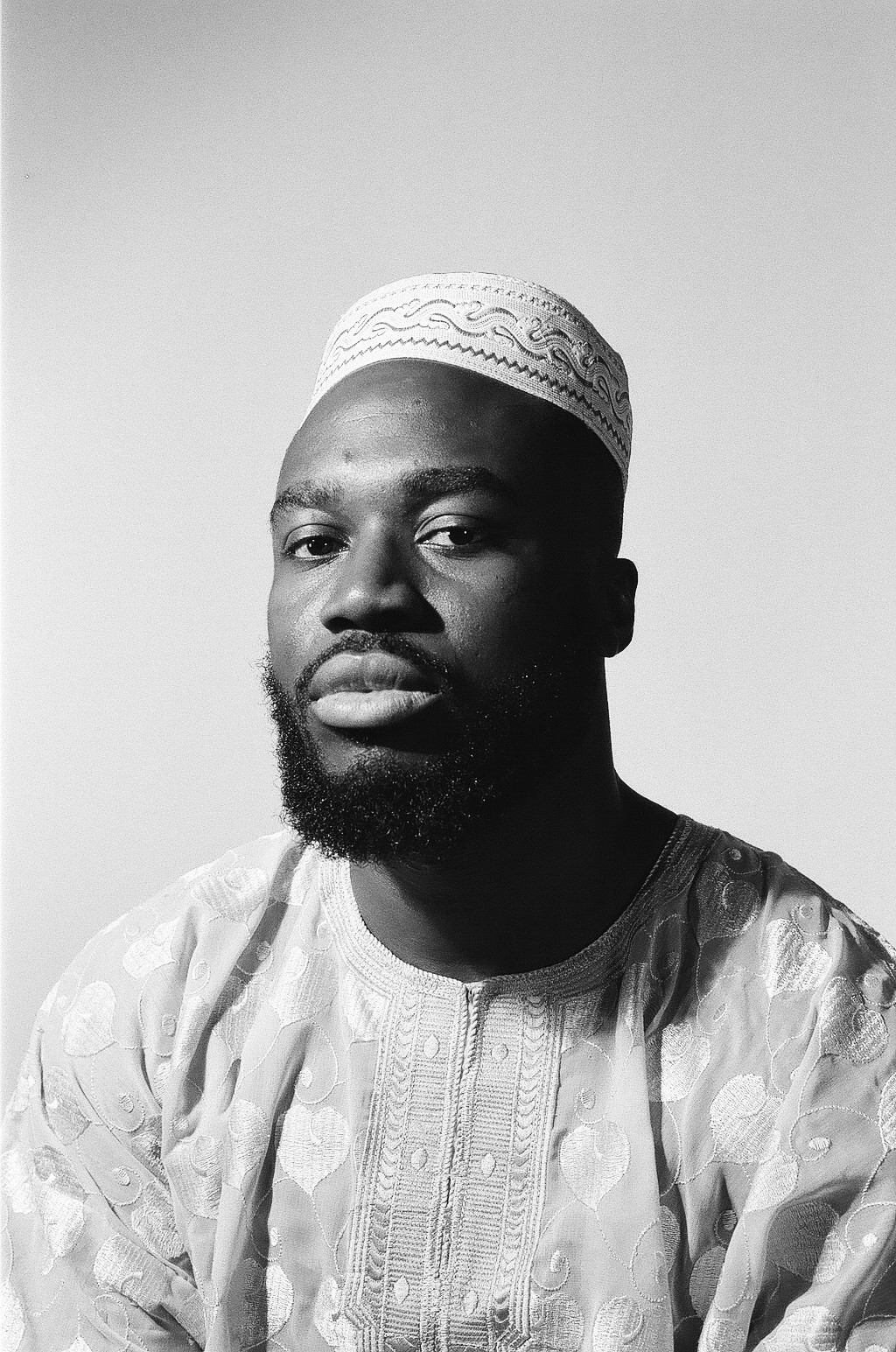
Jacob Moran: Thanks for stopping by. You have a very interesting story. Would you mind giving us a little insight as to what led you to photography as a creative outlet?
Francis Nwosu: Photography for me has always been a coping mechanism, whether it be emotional or psychological distress. I am a recovering addict pushing two and a half years clean. I had messed around with cameras here and there, but once I decided to give up abusing drugs, photography became such an outlet for me to put my time and energy into. It was really an escape, because those first couple of months of recovery are extremely lonely. I had no knowledge of the technical aspects of photography and was just taking pictures of anything and everything. I have always been interested in the arts. I did graphic design for a long time which helps with photography greatly.
JM: So do you feel as though art can be a truly valid form of therapy and recovery for people?
FN: I think that’s undeniable. For me it was such a great way of getting out of my head. A way of keeping my hands and mind busy. I am a very tactile person so keeping preoccupied has always been an issue for me. Photography was such a great way of immersing myself in my environment while escaping my own mind. The inner me was going outside of myself and observing the outside world and it brought me such an inner peace. It has been instrumental in my recovery.
The biggest thing that pops out to me with your work is color. It’s always so vibrant and your combination of colors is always perfect. Do you start with a color pallet when creating work as a jumping off point?
FN: My work always starts out with an emotion. That emotion helps me form visually what I would like to represent through my art. I don’t feel like I am as intentional as people think I am. It isn’t that I don’t respect the process. I just get such a satisfying feeling from a small level of planning. I’ve realized that the more complicated I make something the less enjoyable it becomes for me. My inspiration comes from something as simple as listening to a song and feeling an emotion and then trying to translate that emotion visually. So I would say my use of color is directly linked to emotion and my expression of that emotion visually.
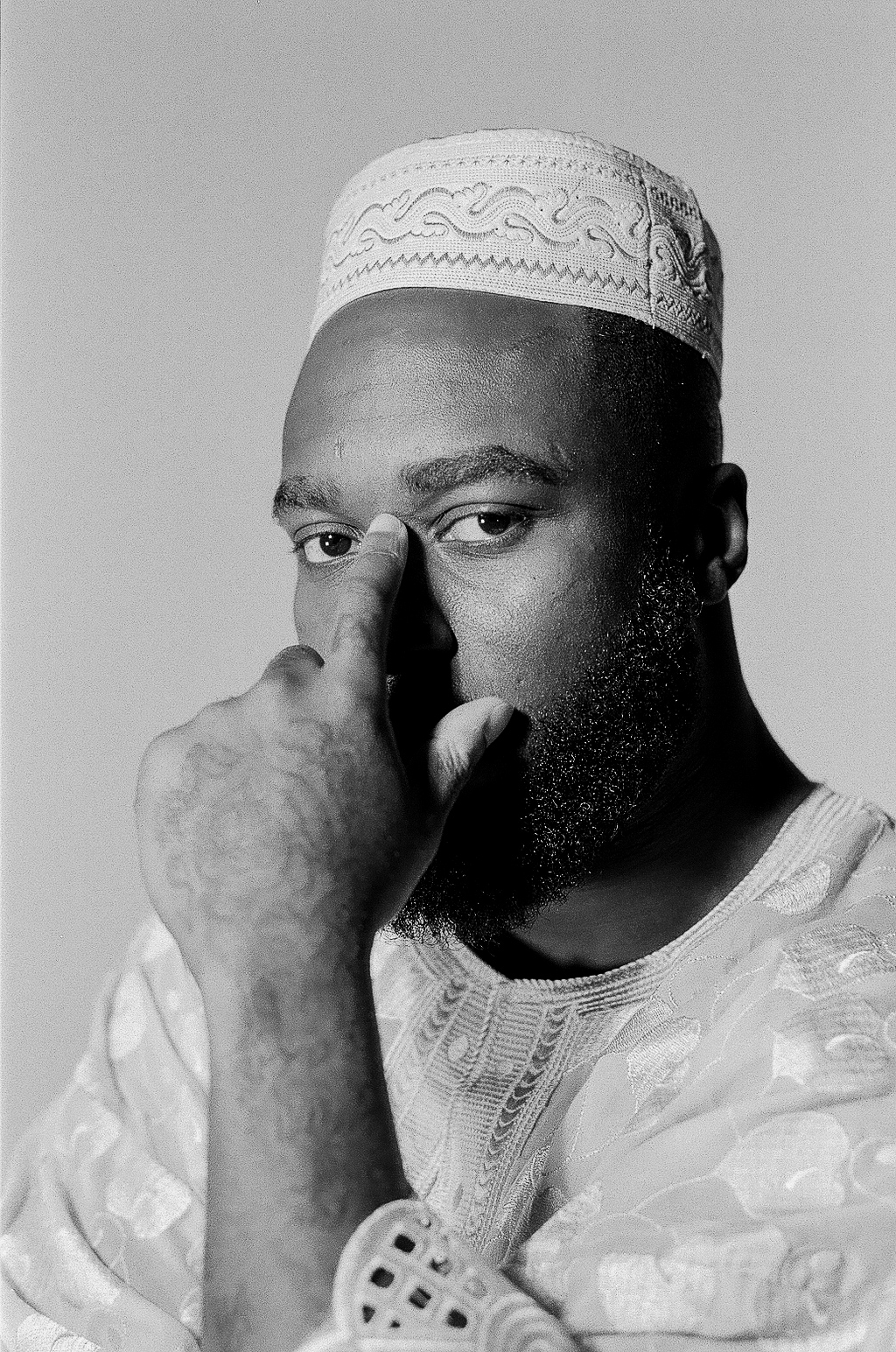
JM: The work you put out is inspiring and almost always reflects the strong faith you have. It’s always very peaceful. How important is it for you to reflect your faith in your work?
FN: It is the biggest driving force behind my overall creative energy. I’m not trying to make people believe the way I do. My goal is to take people created in the image of God and tell their story as beautifully as I possibly can. That doesn’t always translate to prim and proper. You may see a gun or some other aggressive aspects to my work. But I always try to convey to viewers that when you see my work, you are looking at the beauty of God’s creation. That doesn’t mean I’m not willing to tell ugly stories but I am very careful about how I represent myself. Humans are the greatest thing and the biggest problem. I just want to show the beauty in that.
JM: To be blunt, photography is a white male dominated field. Being a black creative, there are certain expectations placed upon you when creating photos. I’d like to hear more about how those expectations have impacted your work.
FN: It’s funny, because like I said, photography is an escape from reality for me. The more I started to learn about photography and the culture around it I realized that I am a minority and of that minority there are a lot of us putting out the same type of work, because that is what is expected of us. However I have to tell my story and my story doesn’t ever align with what people think I should be shooting. People think of black people as being a monolith when it’s really a spectrum. Here I am in this community of beautiful artists who just so happen to be white. So how do I set myself apart without falling victim to what people want me to shoot? The answer is just to tell my story. I never look at it and think about how I can be what people expect me to be because I’m never going to be what people expect. I am me and my work directly reflects that.
JM: The portraits you make always have a vulnerability and honesty to them. So much so that it’s almost tangible. Do you naturally draw this feeling from the muses in your photograph or is it a conscious effort?
FN: I think that naturally comes out through what I am trying to express creatively. One of my biggest creative fears is being misunderstood. I would rather have someone understand my work and not like it than misinterpret or not understand it. When I have this idea in my head I am always battling an imposter syndrome or worried that people are going to think I am pretentious. I just can’t move like everyone else because that brings me no peace. I try to walk a middle ground with my work. My work leans much more conceptual portraiture. I always strive to be a storyteller through my images. My honesty and vulnerability comes out naturally through trying to tell these stories that are in the same vain.
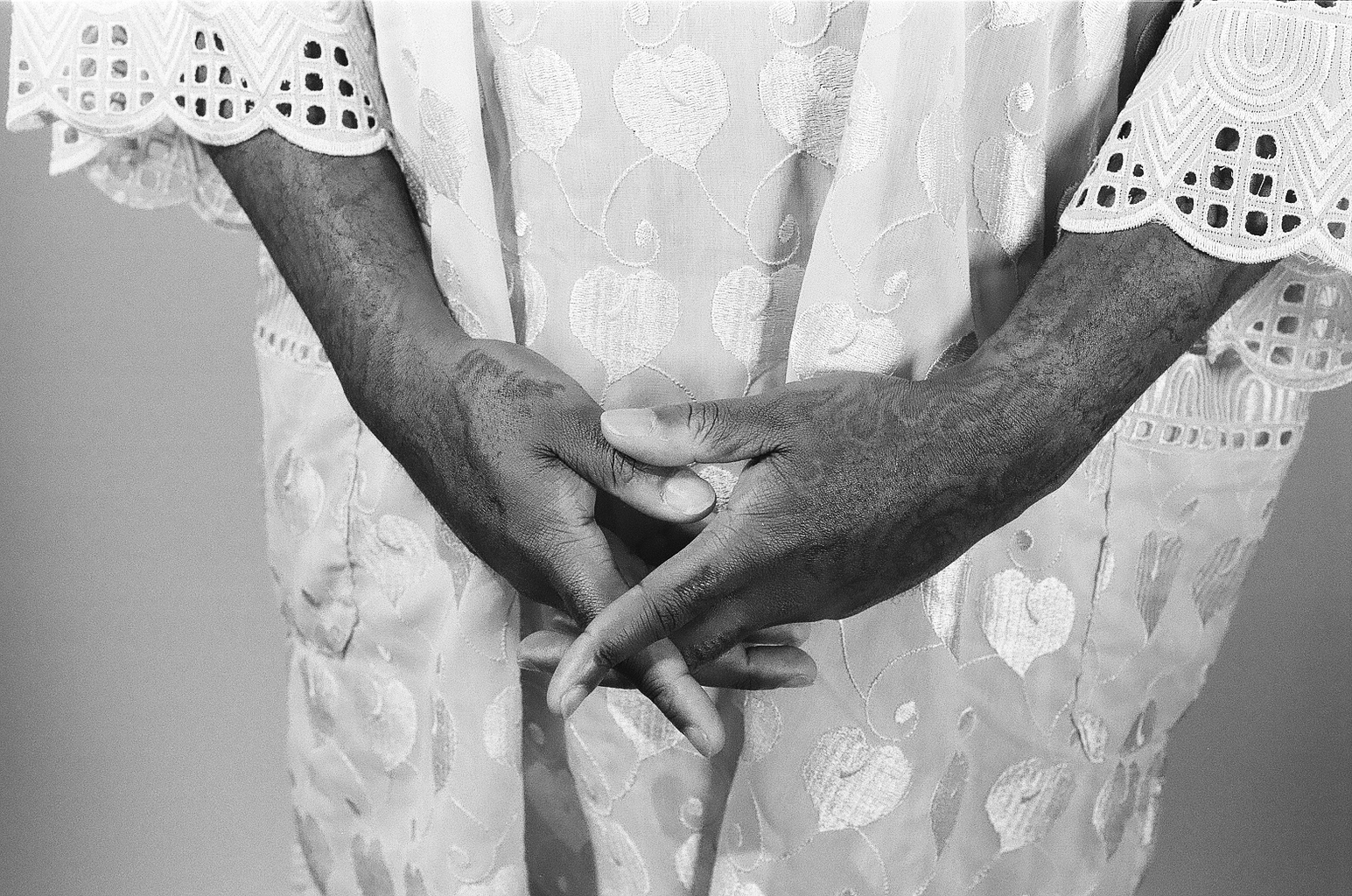
JM: Photography isn’t the only artistic expression you indulge in. You recently released your first single “Glory” a trap-gospel record under the rap name Steeze Jones. I don’t see a lot of photographer rapper overlap. What compelled you to start rapping?
FN: Man I’ve been making music since before I picked up the camera. I went to prison in 2012 and when I had got out the landscape of the music industry had changed. You could legitimately be a musician from home. I made some songs when I was still abusing drugs, but once I came to know Christ and looked back on some of my old music and couldn’t justify it in my soul. Music now is such a validation for me to look back and say that I got over that hump of drugs and violence and express my love for Christ. I am not trying to be a rapper though. ‘Glory’ was just a very therapeutic way of introducing the born again me and showing the growth from the old me over a hard ass beat.
JM: As if rapping and photography wasn’t enough you are also a skilled videographer shooting short films like BLK MND, FREE FALLING & Freedom. BLK MND in particular struck me. It was so expertly shot in your use of lighting. What is your number one goal when shooting short films?
FN: First and foremost I can not take complete credit for BLK MND. My friend Joe Frank was the Director of Photography on that piece. I was creative director on it. But yeah I am in love with filmmaking and I would say the goal is the same. Just telling people’s stories. The only thing that is stopping me from going all in on filmmaking is because people have this very skewed view of how much it costs. The time and energy that goes into it just isn’t reflected in what people are willing to pay. I enjoy film making so much and have plans to do a lot more. I’ve started shooting with anamorphic lenses which are specifically designed for the big cinematic movie feel. I want to do everything from fashion videos to short movies. I just love cinema so much.
JM: Indy is starting to grow a fairly robust photography community. It seems like every year there are more photographers. How do you feel the state of photography is in the city? Do you get inspired by other people’s work?
FN: There is so much unrealized talent here in the city. Some of the most talented photographers in the city have very small followings or are just unknown. When I say talented I don’t mean just technically good. I think some people think those are one and the same. There are so many highly creative and intuitive photographers in the city. If people genuinely shot what really moves them instead of what they think people would like I think this city would blow up. It’s like a time bomb. There is so much potential here in forms of all art that eventually people are going to recognize and see all of the talent and skill here.

